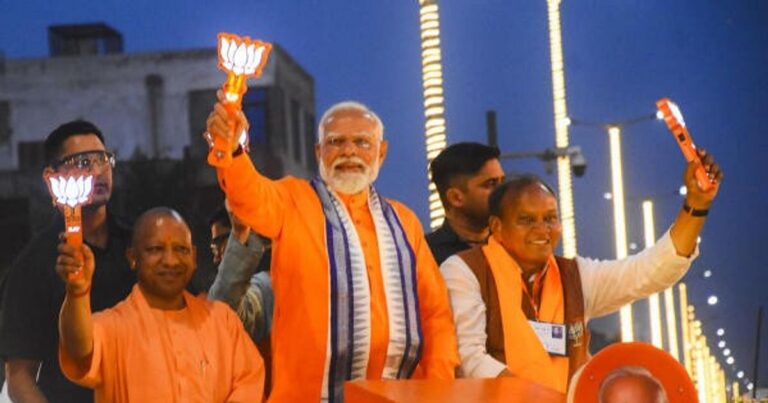Overwhelming majority
Ayodhya was considered the safest constituency, and in January Modi inaugurated a grand temple to Lord Ram there, sparking national enthusiasm and fulfilling a long-held promise for the BJP to move from the fringes to the mainstream of Indian politics.
Singh’s speech made no mention of profiting from lower castes, and Modi’s aides have frequently downplayed concerns about constitutional changes that would guarantee quotas in schools and government jobs to historically disadvantaged caste and tribal groups that remain among India’s poorest.
But the post quickly went viral on social media, galvanising a protest movement.
SP leader Akhilesh Yadav posted on social media that the BJP wants to abolish the quota system and keep the underprivileged sections of society “as slaves”.
At the rally, Yadav’s ally and leading opposition figure, Rahul Gandhi of the Indian National Congress, pulled out a pocket-sized copy of the constitution and began warning that it was under threat, a message repeated in media advertisements and by party activists in Uttar Pradesh, who an SP spokesman said numbered 600,000.
India’s castes have lived in uneasy coexistence with one another for thousands of years.
While the BJP has long been seen as a stronghold of upper-caste Hindus, Modi, who belongs to a lower caste, has made inroads with previously marginalized groups, according to an analysis by the Delhi-based Centre for the Study of Developing Societies (CSDS). He has sought to unite Hindus by shifting the focus away from traditional notions of caste and instead spotlighting the poor, youth, farmers and women (what he calls the four major castes in modern India). Since coming to power, Modi has fielded a succession of men from lower castes and women from tribal groups for the largely symbolic post of Indian president.
The relative consolidation of the Hindu vote in the past two national elections has enabled the BJP to marginalize India’s roughly 200 million Muslims and overcome long-standing concerns about unemployment, inflation and rural distress.
Sandeep Shastri, coordinator of CSDS’ India elections program, said the number of people who identify primarily with Hindu beliefs appears to have plateaued in 2019.
This year, the BJP managed to win only 54 of the 131 seats reserved for candidates from underprivileged sections, down from 77 in 2019. It won eight of the 17 reserved seats in Uttar Pradesh, compared to 14 last time.
Dharmendra Yadav, 30, from a lower caste group in Varanasi constituency, said he believed the BJP “would have abolished reservations”.
“When the opposition raised the constitutional issue, they just verified it for us,” said Dharmendra, whose surname indicates he belongs to the same caste as Social Democrat Akhilesh, though he is not related to him.
Dharmendra had supported the BJP earlier but this year he supported the opposition party.
“Caste politics still has a huge influence in Hindi-speaking areas,” said Patel, the state BJP leader, referring to the central Indian state that has been a BJP stronghold since 2014.

